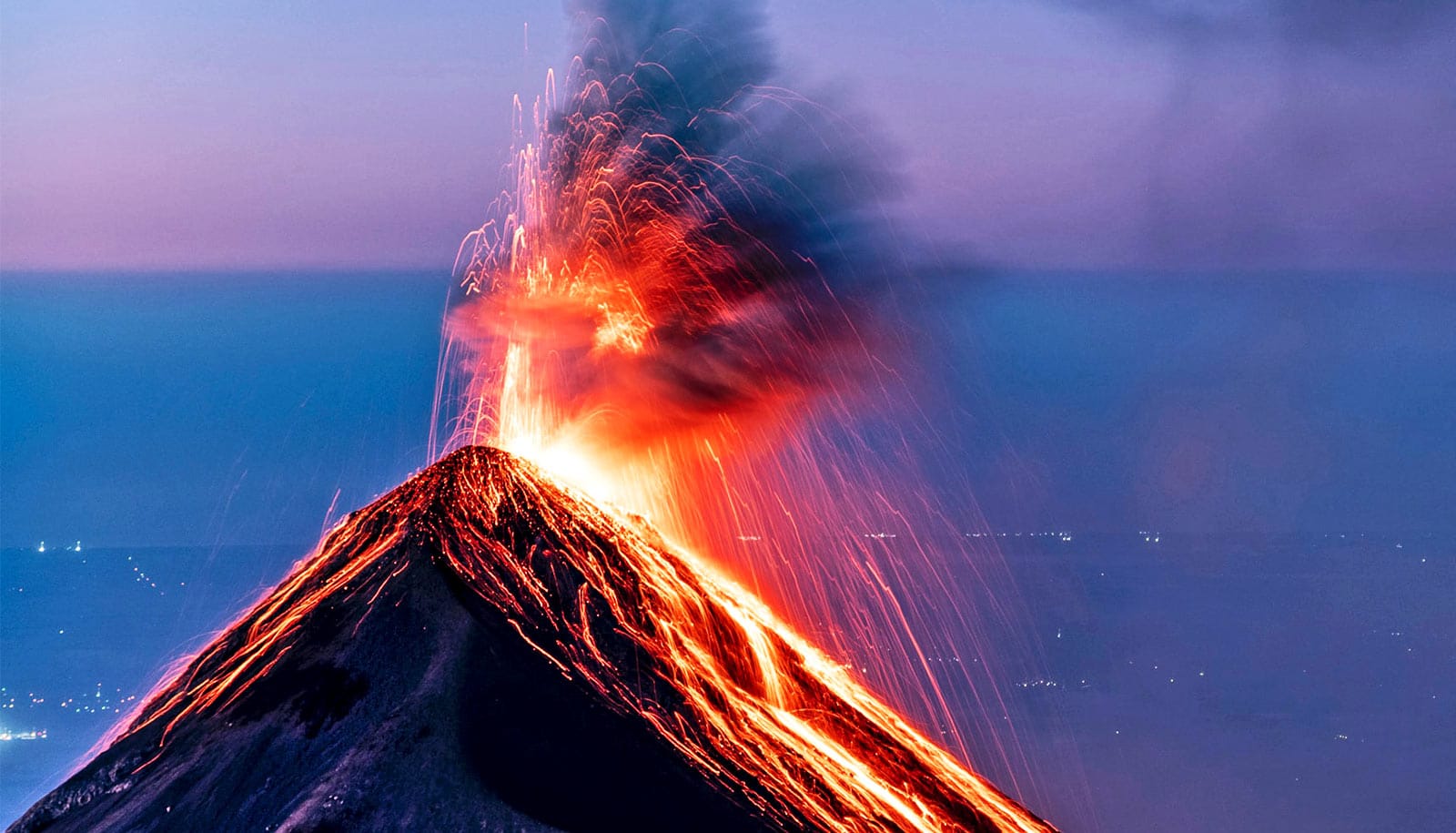Climate change that has occurred over the past 260 million years and brought about mass extinctions of life during these periods was due to massive volcanic eruptions and subsequent environmental crises, a team of scientists concludes .
Their new analysis, which appears in the journal Earth-Science Reviews, shows the eruptions released large amounts of carbon dioxide into the Earth’s atmosphere, leading to extreme greenhouse climate warming and bringing about near-lethal or lethal conditions to our planet.
Significantly, these phenomena—which occur every 26 to 33 million years—coincided with critical changes in the planet’s orbit in the solar system that follow the same cyclical patterns, the researchers add.
“The Earth’s geologic processes, long considered to be strictly determined by events within the planet’s interior, may in fact be controlled by astronomical cycles in the solar system and the Milky Way galaxy,” says senior author Michael Rampino, a professor in New York University’s biology department. “Crucially, these forces have converged many times in the Earth’s past to foreshadow drastic changes to our climate.”
The researchers caution that their conclusions have no bearing on 20th- and 21st-century climate change, which scientists have shown to be driven by human activity. The studied pulses of volcanic eruptions last occurred about 16 million years ago.
However, the analysis nonetheless supports the well-established impact of carbon dioxide emissions on climate warming.
The scientists focused on continental flood-basalt (CFB) eruptions—the largest volcanic eruptions of lava on Earth, with flows covering nearly half a million square miles—and other major geological events over the past 260 million years.
These included ocean anoxic events—periods when the Earth’s oceans were depleted of oxygen, thereby creating toxic waters—as well as hyper-thermal climate pulses, or rapid rises in global temperatures, and resulting periods of mass extinctions of marine and non-marine life.
They found that CFB eruptions frequently coincided with these other lethal geological phenomena, illuminating the larger impact of volcanic activity. The connection with astronomy is evidenced by the commonality of the multi-million-year regular cycles of volcanism and extreme climate with known cycles of the Earth’s orbit in our solar system and in the Milky Way galaxy.
The authors found that the agreement between the geological and astrophysical cycles is much too close to be merely a chance occurrence. A major remaining question, they add, is determining how the planet’s astronomical movements perturb the Earth’s internal geological engines.
“This is an unexpected connection and predicts a convergence of both astronomy and geology—events that take place on the Earth do so in the context of our astronomical environment,” Rampino says.
Additional researchers are from the Carnegie Institute for Science and Barnard College.
Source: NYU


